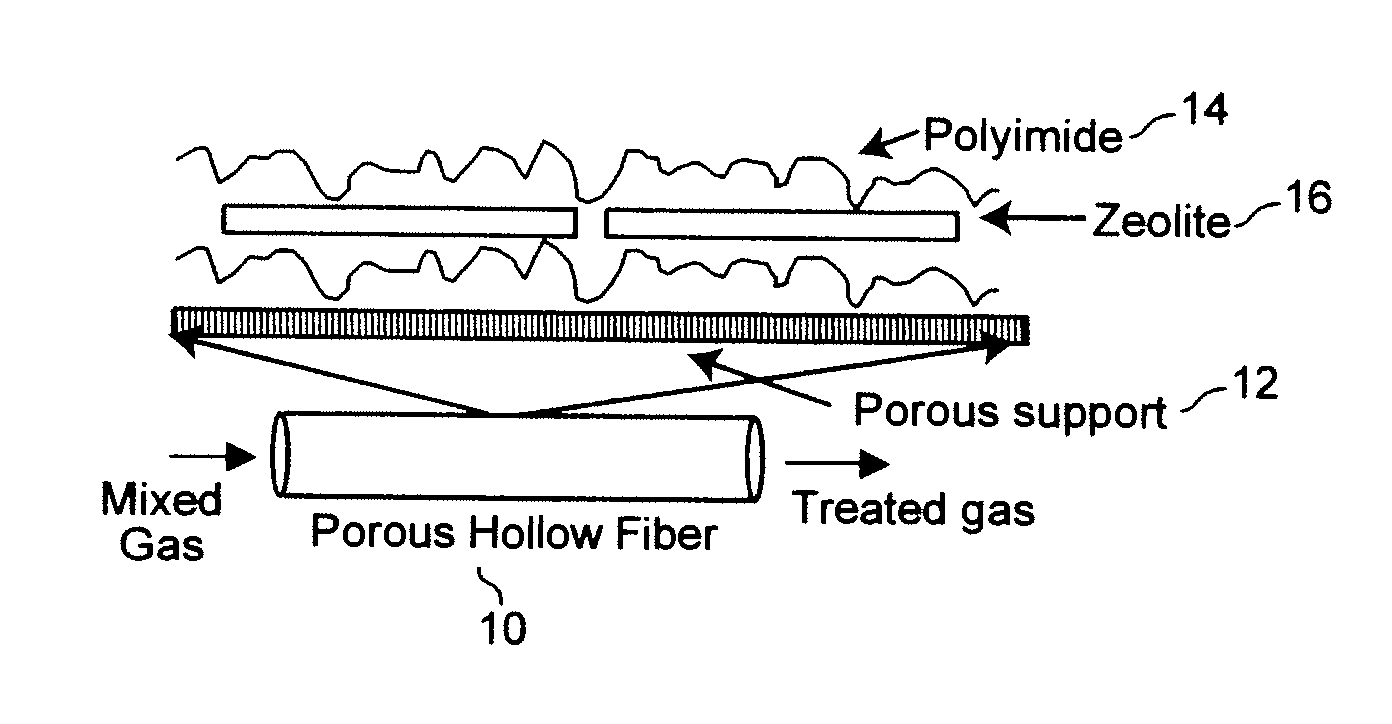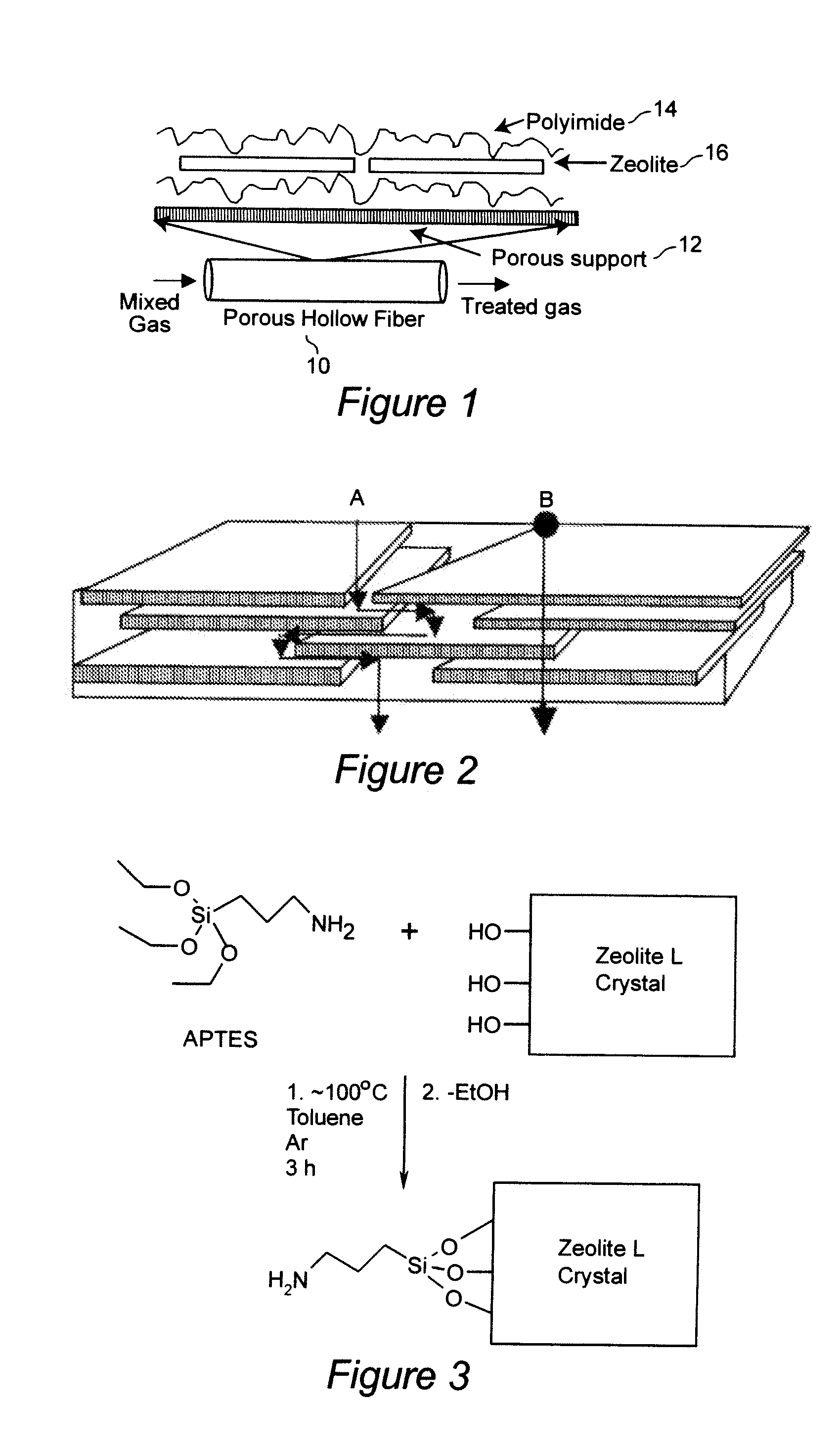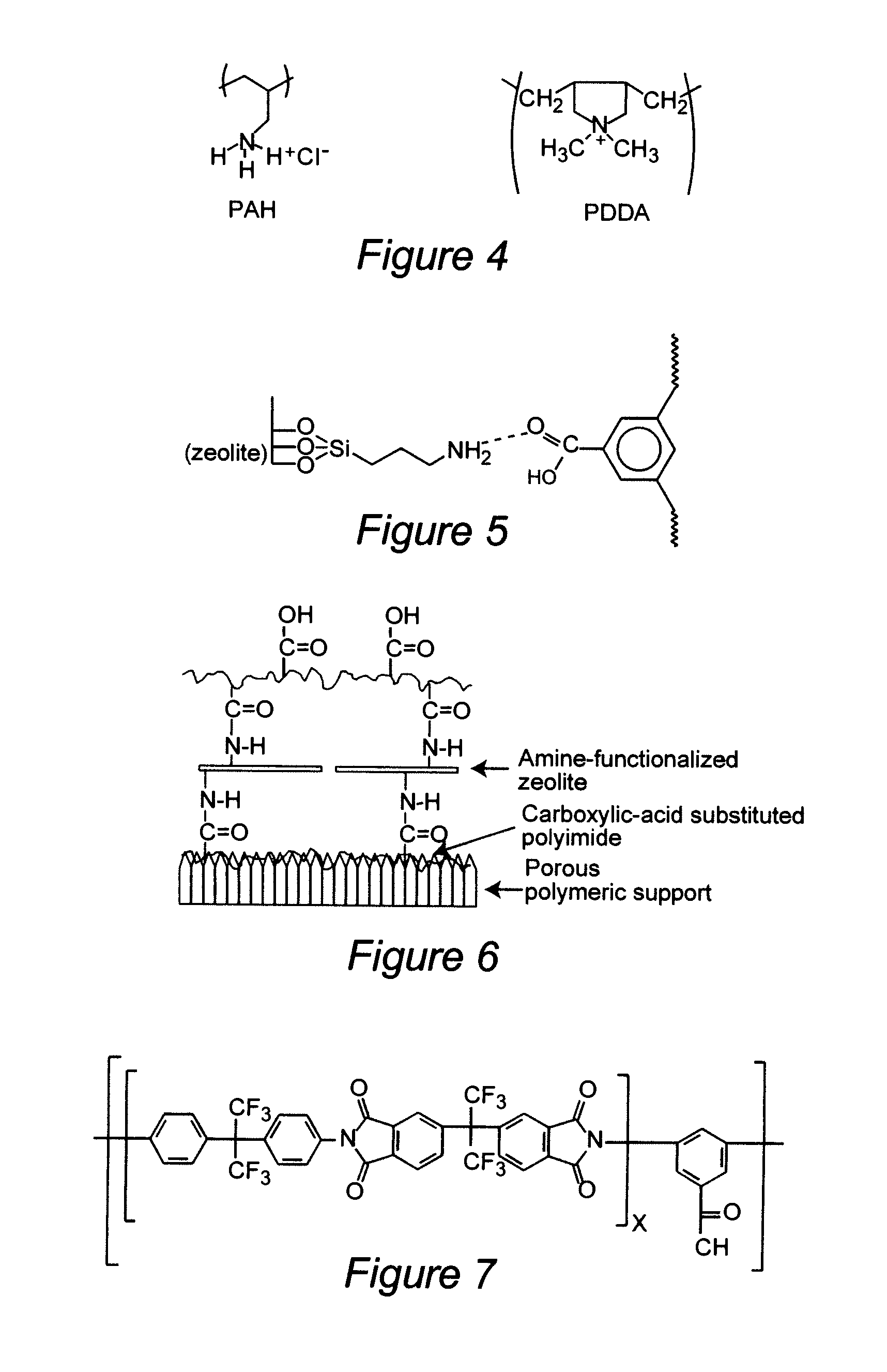Ordered mesopore silica mixed matrix membranes, and production methods for making ordered mesopore silica mixed matric membranes
a technology of mesopore silica and mixed matrices, which is applied in the field of membrane materials and systems, can solve the problems of limited membrane performance, difficult to fabricate into large areas, and ineconomical feasibility for large-scale applications
- Summary
- Abstract
- Description
- Claims
- Application Information
AI Technical Summary
Benefits of technology
Problems solved by technology
Method used
Image
Examples
example 1
[0102] Mixed Matrix membranes of 6FDA-6FpDA-DABA, a glassy polyimide, and modified zeolites (ZSM-2) were successfully fabricated using the procedure outlined in this paper. The membranes were cast from solution, and then exposed to different gases for the purpose of determining and comparing the diffusivity coefficients, the solubility coefficients, and the permeation rates of He, O2, N2, CH4 and CO2 of the pure polyimide and the composite membrane.
[0103] FTIR spectra were collected from the pure polyimide, the polyimide and untethered zeolite solutions, and the mixed matrix membrane (MMM) solution. Comparison of the spectra revealed the presence of hydrogen bonding in the MMM solution not present in the other samples. FESEM images and TEM images did not reveal the presence of voids between the polymer and the zeolite. These images also revealed that when given ample time for the solvent to evaporate, the zeolites sediment to one side of the membrane. This develops a polymer rich p...
example 2
Polysulfone and Mesoporous Molecular Sieve Mixed Matrix Membranes for Gas Separation
[0139] Introduction
[0140] Polymeric membranes have been very successful in addressing industrially important gas separations, thereby providing economical alternatives to conventional separation processes. However, polymeric membranes for gas separations have been known to have a trade-off between permeability and selectivity as shown in upper bound curves developed by Robeson. [Robeson, L. M., J. Membr. Sci. 1991, 62, 165.] Many research efforts have been aimed at modifying the backbones and side-chains of polymers experimentally in order to surpass the permeability-selectivity tradeoff. This has been difficult to achieve and in fact also, as shown by Freeman [Freeman, B. D., Macromolecules 1999, 32, 375], theoretically improbable. Thus, the use of polymeric materials as membranes has technical limitations. [Koros, W. J.; Fleming, G. K., J. Membr. Sci, 1993, 83, 1.]
[0141] In order to enhance gas s...
PUM
| Property | Measurement | Unit |
|---|---|---|
| surface area | aaaaa | aaaaa |
| wt % | aaaaa | aaaaa |
| wt % | aaaaa | aaaaa |
Abstract
Description
Claims
Application Information
 Login to View More
Login to View More - R&D
- Intellectual Property
- Life Sciences
- Materials
- Tech Scout
- Unparalleled Data Quality
- Higher Quality Content
- 60% Fewer Hallucinations
Browse by: Latest US Patents, China's latest patents, Technical Efficacy Thesaurus, Application Domain, Technology Topic, Popular Technical Reports.
© 2025 PatSnap. All rights reserved.Legal|Privacy policy|Modern Slavery Act Transparency Statement|Sitemap|About US| Contact US: help@patsnap.com



